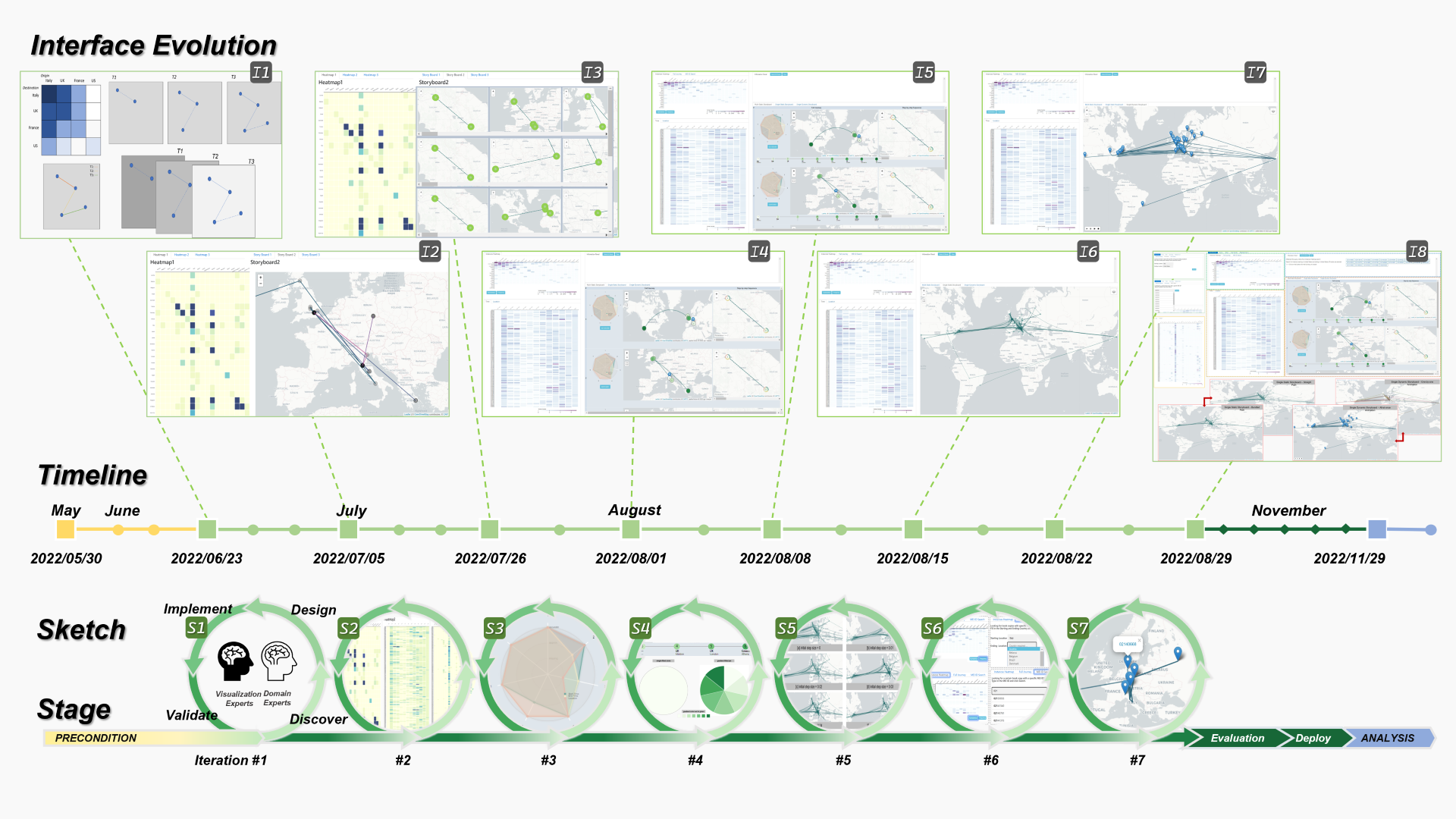Visualizing Historical Book Trade Data: An Iterative Design Study with Close Collaboration with Domain Experts
Yiwen Xing, Cristina Dondi, Rita Borgo, Alfie Abdul-Rahman
DOI: 10.1109/TVCG.2023.3326923
Room: 109
2023-10-25T03:24:00ZGMT-0600Change your timezone on the schedule page
2023-10-25T03:24:00Z

Fast forward
Full Video
Keywords
Design study, application motivated visualization, geospatial data
Abstract
The circulation of historical books has always been an area of interest for historians. However, the data used to represent the journey of a book across different places and times can be difficult for domain experts to digest due to buried geographical and chronological features within text-based presentations. This situation provides an opportunity for collaboration between visualization researchers and historians. This paper describes a design study where a variant of the Nine-Stage Framework was employed to develop a Visual Analytics (VA) tool called DanteExploreVis. This tool was designed to aid domain experts in exploring, explaining, and presenting book trade data from multiple perspectives. We discuss the design choices made and how each panel in the interface meets the domain requirements. We also present the results of a qualitative evaluation conducted with domain experts. The main contributions of this paper include: 1) the development of a VA tool to support domain experts in exploring, explaining, and presenting book trade data; 2) a comprehensive documentation of the iterative design, development, and evaluation process following the variant Nine-Stage Framework; 3) a summary of the insights gained and lessons learned from this design study in the context of the humanities field; and 4) reflections on how our approach could be applied in a more generalizable way.